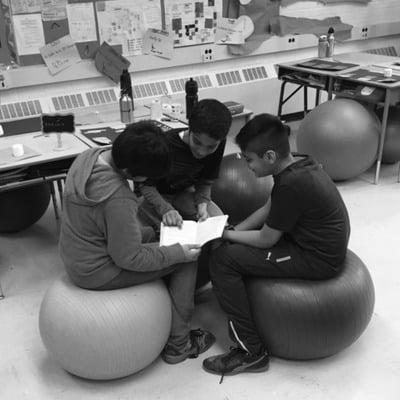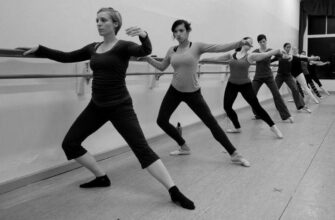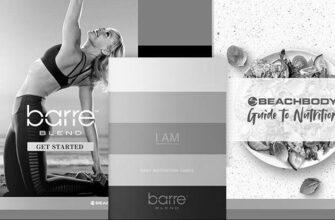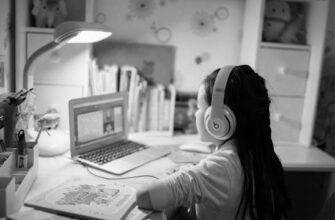This short article appeared initially in German “So geht Schule ohne Stühle.” on March 19th 2015 at http://www.gobeyondtraining.net/blog-1/2015/3/16/so-geht-schule-ohne-sthle
This globe can be rather complicated– at the very least when it concerns sitting: On the one hand, there is lots of proof about the negative effect of way too much resting; on the other hand, there is probably absolutely nothing else as persistant as the common all-day resting at institution and also at work. And also on a third side, there are the positive effects of resting– the emphasis and also concentration on the task at hand.
The majority of my life, I did not care that much concerning all this. I did have a mainly sitting-based life (school, university education, desk-based work), but at the same time I constantly had a rather energetic and sports lifestyle, to make sure that I did not really feel the impact of the time spent sitting down.
That transformed, fairly swiftly. There were two incidents that triggered a significant mindshift for me:
I left my (office-based) job as well as began to work from house.
My kid began grade school.
And these 2 occurrences had 2 major impacts:
I did all my computer/office work with the floor– and also was impressed how this transformed my hip wheelchair.
My child started remaining on chairs more than ever in the past.
I understood: Sitting was not the issue. The problem was being in the very same joint configuration on the same chairs at the very same workdesk elevations at all times.
Being in itself can in fact be incredibly valuable. It’s the tranquil middle in between relaxing and also standing/being active. It’s a setting of concentrated concentrate on a task– no dropping off or escaping.
And simply resting can obtain your body in an extremely high variety of joint postions and load– if you simply allow it. Which essentially implies: Releasing the actual thing that keeps your sitting in the same position: chairs and also the going along with tables. I deliberately state “releasing” as well as not “getting rid of”– due to the fact that chairs can be one of many choices. Simply not the just one.
I will not lie: It won’t be very easy when you have been used to resting on a chair all your life. It will take you via some initial pain, as well as it will certainly take time, regular initiative and also practical progressions (just as resting without a cushion does not happen from one day to the various other (sorry-German just so far)).
It would certainly be much easier if, as kids, we would just not unlearn all the various sitting settings that we can.
And that’s specifically what I would love to give to my son. Specifically because his cerebral palsy makes it even harder for him to rest properly as well as to preserve his joint movement contrasted to children without handicaps.
The inquiry is just how– when he spends a lot of his time at institution? Overhauling the entire school system was not a choice, as well labor-intensive; so I needed an extra pragmatic service. Which I discovered in the individual of his remarkable class instructor.
Right here is what took place: I had a conversation with her where I told her regarding my thoughts and also experiences relating to resting and asked her straight out whether she would want trying something various for an adjustment– a chair- and table-free classroom atmosphere. She said YES today (!) as well as was enthusiastic regarding this concept from that moment on. To maintain it easy, she recommended to do it in the structure job of a task week, after that we would be quite adaptable relating to motifs and also material. To make sure that’s what we did.
I had all sort of fantasies running through my head ahead of time. That it would be a terrific succes. Yet also that it would develop into full chaos, the kids would certainly be absolutely unpleasant which it would be hard to keep the common classes going.
And right here is exactly how it ended up:
Redesigning the Class
Background info on the trainees: Second quality of a normal grade school (age group 7-8 years) in Munich/Germany; 14 pupils (10 children, 4 women); 17 institution hours in the brand-new class setting over the whole week
Our aspiration for the re-design of the class was: Usage just what was available in the institution structure anyhow– so anything we could obtain from other class or the fitness center. The pupils aided with eliminating the chairs as well as tables as well as getting the devices that we would certainly be using instead. Afterwards, I organized the new “furnishings” based on a structure that I had thought out ahead of time. Essentially, I tried to integrate the following:
” Workdesks” in three different elevations, in order to accomodate the students’ different physical demands (body elevation, joint flexibility).
Enough work/desk room for all kids.
The new set-up should permit four various discovering scenarios: private work, tiny team work, lecture-style mentor facing the board (” theater”), and Circle resting.
Kick-Off/Introducing the Chair-Free Theme.
The pupils were educated beforehand and were truly looking forward to the new-set up (see images– in German). The moms and dads received an information letter regarding the background of the chair-free style; we inquired to allow the children put on comfy clothing as well as robust socks (they generally wear slippers in class); and to let their youngsters take a tiny pillow (for resting and/or support) to class.
On the very first day, we made use of the Circle Time at the beginning of the fabulous for a brief intro of the week’s chairfree theme. It was essential to us to allow the kids know that the classroom was not a health club, although we utilized gym devices for the brand-new discovering environment. We allowed the children set guidelines for the week as well as discussed them. We additionally let them understand that they could choose their very own work area and were not restricted to it– we urged them to move over the course of a day and the entire week in order to try different settings. We additionally reminded them not to remain in one resting position constantly and that it was instead okay to transition as much as they required to feel comfortable, which I would certainly sustain them with this if needed.
As I did not know whether it would certainly be easy for the youngsters to discover an excellent “seat”/ job area, I put little marks on possible sitting spots. It ended up that this was not needed– they did not have any type of difficulty with organizing themselves and also their institution stuff at ideal places.
Introducing Sitting Placements.
I intentionally did not give any kind of input with respect to sitting placements at the start on the very first day– I wondered what they would do. It carried out in reality end up that the youngsters experienced different varations of resting quite normally as well as intuitively, in each of the four training formats as well as depending upon the job they were dealing with.
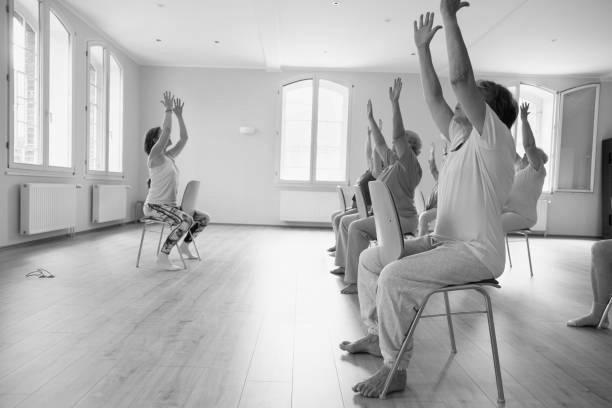
The second day started by making them extra familiar with resting positions that are used around the globe. For this, I had actually prepared a bigger print-out of an image from Gordon Hewes’ publication on “World Distribution of Specific Postural Behaviors” (see below). We kept it easy: I aimed at different positions and asked one youngster at once to demonstrate it. Given that I had actually observed the children’s specific resting routines the on the day previously, I recognized what stances each of them was good at as well as picked them according to my observations. The instructor informed me later on that she saw how they valued that– due to the fact that each of them obtained a feeling of their staminas.
Aus: World Circulation of Certain Postural Practices, Gordon W. Hewes, American Anthropologist New Series, Vol. 57, No. 2, Component 1 (Apr., 1955), pp. 231-244 http://www.jstor.org/stable/666393.
We duplicated this type of short demo session on the 4th day of the week.
On the 3rd day I presented them to noticing their resting bones– i.e. I guided them to roll their pelvis while resting on the floor and also to observe when the bones where in a lot of contact with the flooring. That was rather difficult for a lot of them. My goal was not to show them exactly how to sit “correctly/well”– however instead to make them much more knowledgeable about their pelvic setting. Because they were changing positions rather frequently I was not stressed that they may rest excessive on their tailbone (with posteriorly tilted hips). Still, for a longer duration of chairfree resting I would most definitely repeat this session in regular periods and also maybe include hints to remind them throughout class. Once more– not in order to single out a “most proper” sitting stance yet rather to urge range and recognition in their resting behaviors.
Attention/Concentration in Course.
This project week was mostly interested in adding selection to sitting in class. Nevertheless, we were likewise interested exactly how this kind of set-up would also influence trainees’ communications and interest periods in class. There were additionally logistic elements– e.g. where youngsters would have their class material and how hand-outs would be distributed during course. Below are our observations:.
Generally, there was not that much distinction in focus and also the students’s ability to concentrate on a task. The teacher noted that those kids who had generally a lot more problem with taking note had similar difficulty in the brand-new set-up– yet not more. And those able to concentrate even more easily were just as alert on the floor. Nonetheless, we concurred that one week is certainly as well short of an amount of time and also a longer period (2-3 months) of such a set up would be required for an extra definitive observation.
The largest challenge with focus and also sound level was throughout changes from one mentor style to the next, i.e. from the Circle to private job areas, or from their job spaces to the “theatre”.
A huge advantage was that there was much more space for as well as much easier changes in and out of movement breaks during course.
Starting on the 3rd day, we chose 3 children that would certainly be in charge of seeing to it the sound level would certainly not obtain expensive. By doing this, the children were asked to take care of the kind of finding out atmosphere they needed for concentrated job. This really functioned completely well, although it was still really dependent on which kids were nominated (some obtained quickly soaked up in their tasks and simply forgotten advising the other kids).
Bags and pupils’ college supplies were kept in the perimeter of the classroom, close yet not always alongside where trainees were resting. This way no bags would obstruct the space they required for sitting– and children might have to stand up as well as stroll a couple of actions to obtain their stuff or stow it away. This functioned quite well and additionally maintained the classroom environment “aesthetically” clean.
Dispersing hand-outs and also pupils’ textbooks, which was typically done by two kids, took a little bit even more time because of the lack of fixed seats (so the children had to look where everybody was sitting). It was not a big deal– yet it could be worth thinking about alternative methods of doing this, like passing things from two sides and allow each pupil take their very own things from the stack.
Inclusive Class.
Among the trainees (my son) has a physical handicap (cerebraly palsy; spastic muscle tone in his legs, and also weak tone in his lower back) and also has therefore minimal joint varieties. For him the new set up was a big possibility, yet likewise had its difficulties. Due to the fact that he was not restricted to a chair, he was much more flexible in accomodating his hip joint in various positions which was a real advantage for him. At the same time, it required a little bit a lot more imagination and also added pieces of assistance to assist him tilt his pelvis much more anteriorly. It would be truly intriguing to see whether a longer period of chairfree sitting on the flooring would have a measurable influence on his hip flexibility and also muscle tone.
However a lot more normally: This type of classroom design remains in itself comprehensive, as it adapts to every individual student’s staminas, restrictions, body dimension and physiological distinctions.
Discovering and also Job Freedom.
If there is something like “sitting freedom” (I thus reveal a brand-new term!) after that this sort of classroom set up would certainly be a prime example. Specifically:.
Individual job as well as sitting area is not as constrained as in the routine chair/table set-up. Consequently, the youngsters are able to choose exactly how they orient themselves in space (e.g. with respect to the board or to the remainder of the group), whom they rest with and how near the next pupils. As kids undergo their school day, these “criteria” remain dynamic and also can accomodate the trainees’ transforming demands (e.g. distance to others or to the educator).
Changing where they being in the class in a self-directed manner.
The concern that is truly interesting to me: Does resting autonomy have an impact on the pupils’ self-perceived job autonomy? Is an extra self-directed sitting plan conducive to a self-directed knowing experience? The teacher’s observations were appealing– but once again, the moment frame was actually too short for a more definitive feedback.
Cost Contrast.
Here is a rough back-of-the-envelope comparison of furniture/equipment cost for a class of 15 students in a normal vs. chairfree class (all prices in EUR and also based on German price levels):.
Preliminary price for a regular class:.
5 × 4 Triangular workdesks at approx. EUR 200,- = EUR 4000,-.
15 Chairs at approx. EUR 80,- = 1200,-.
= total amount of concerning EUR 5200,- for 15 youngsters.
Preliminary cost for the equipment we made use of:.
2 Health club benches at approx. EUR 350,- = EUR 700,-.
2 Gymnastic floor coverings at approx. EUR 150,- = EUR 300,-.
4 Yoga mats at approx. EUR 20,- = EUR 80,-.
2 Little wedge-shaped floor coverings at approx. EUR 70,- = EUR 140,-.
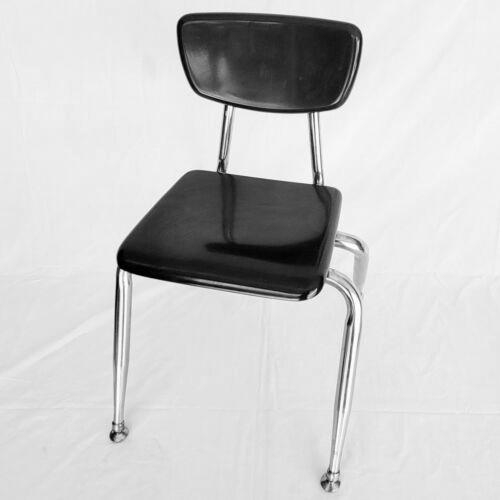
regarding 5 rug ceramic tiles at around. EUR 5,-? = EUR 25,-.
= overall of about EUR 1250,- for approx 15 youngsters (i.e. regarding one forth of the routine price)– as well as it was no problem to accomodate 4 even more children that came from other courses during this week.
Students’ Comments.
The children were absolutely happy for the new resting experience. There was only one child that noticed some mild pain in the back and also discovered it uneasy to get down and up from the flooring– this may relate to this youngster’s usual activity habits. All various other youngsters did not have any kind of troubles and also delighted in the greater sitting liberty. Verbal as well as written comments (see images for examples– sadly German just) was superb and it was enjoyable to see how much they left it.
Final thought– and: Just how will it stick?
The main goal for today was to answer the inquiry: Is it feasible to let elementary school children sit in a much more diverse way– while keeping the top quality of mentor as well as learning at least just as good as in a regular class setting? For this specific class, I can respond to with a precise YES. Although the modification needed plenty of adjustments and also modifications from the children– which would certainly decrease classes at times– it was in fact really outstanding to see exactly how normally the children made the transition within such a short time period.
The children’ enthusiasm made me once again conscious how crucial it is to develop discovering environments that allow for a better variety of (resting) stances. I believe that this can equip and also strengthen youngsters on several levels:.
It increases self-esteem as well as self-efficacy– just by letting them choose their own seat and stance in a self-responsible fashion.
In their body recognition and competence with respect to their body– by letting them experiment, on their own and based upon helpful input from others, with different resting placements and also explore what they are capable of and what they have the ability to find out.
as a group– due to the less organized class space, the children have to be a lot more considerate and also conscientious of others.
and also physically, certainly– much more different resting as well as getting up from and down on the floor (vs. onto a chair) strengthens the whole body.
It likewise revealed me exactly how basic it would certainly be to keep hip flexibility into their adult years if such a resting culture could be established as part of school society and beyond. In my experience, a healthy and balanced hip joint is crucial to our structural as well as useful state– problems with the hip joint commonly activate an entire spectrum of ailments that most often show over and/or listed below the hip. Or, to place it the other way round: If the hip joint is working, things will ususally not obtain regrettable.
At the same time, it is not needed to melt chairs and workdesks. I am envisioning an environment where chairs and workdesks are one alternative of many others on the flooring and in between. When it comes to this course, the teacher created the idea of using the corridor next to the classroom as floor resting room– and the coatrack benches as workdesks.
I can currently certainly say that outfitting a floor-sitting class can be finished with quite easy methods. The difficulty depends on offering the students the appropriate input at the correct time, and also not more than required, so that they can smoothly adapt to the new setting– both psychologically in addition to literally. It would interest have more time for such an atmosphere in order to see what happens after the initial modification stage. From this experience, I as well as the instructor found it vital to have someone help with implementing an environment such as this– this ought to be a person who is considerate of the biomechanical, instructional and psychological aspects that require to be stabilized.
There are substantial advantages for institutions in implementing a (largly) chairfree class atmosphere:.
They would be able to do a better job of accomodating all kids’ sitting needs/requirements as well as therefore making certain a much more useful and healthy school occupation– independent of physical abilities as well as differences in body size within one age group.
Outfitting class comes to be much cheaper.
The furniture/equipment utilized in such a class setting is far more functional (assume activity breaks) compared to chairs and also workdesks that can be utilized only for resting.
The implementation can additionally be affordable if a school chooses to let a number of classes at the same time go chairfree (I can provide you more details on this if you are interested).
It would certainly provide normal institutions a new side with respect to addition: By removing chairs and also workdesks, they are basically eliminating barriers for youngsters that fall beyond physical/motor capability standards (as well as, if you consider it– incorporation is everything about “nobody is the standard”). So every student can discover means of sitting, potentially supported by added equipment/devices, without being selected as “special”.
It was encouraging to see that it is feasible to gain from the chair-critical clinical evidence and also include far more variety to sitting, therefore making it much more suitable with the body’s demands– all the while not loosing the focus as well as attention that comes just in sitting. Which makes the world, once again, a little less complicated.
And if you recognize of any kind of colleges that might have an interest in listening to more concerning this– I would certainly be more than delighted to share our insights and also understandings with instructors and parents.
( If you wish to listen to even more about exactly how the educator lived through this new environment– there will certainly be a webcast with her quickly, so stay stuned!).
Significant thanks to Class 2a of the Helmholtz Institution in Munich/Germany: To the youngsters for their interest, inquisitiveness, playfulness and teamwork; to the instructor Barbara Meder for her innovative frame of mind, the insightful conversations on chairfree pedagogics and also opening her class to me; to my son’s class assistants for their sensible help as well as valuable observations; and also to the parents for the support, rate of interest and the consent to use the pictures as well as video clips made in class during this week. I want every person all the most effective and lots of variety in their (school) days!
About the writer: Patricia Pyrka is a former physicist, strength as well as conditioning train, as well as likewise the former Exectutive of the European Rolfing Association. She is currently the proprietor of Beyond Training– a start-up committed to training and coaching individuals as well as teams regarding the power of adding movement to the most ordinary day-to-day jobs as well as tasks. Patricia has actually started to run the Beyond Training Facebook web page totally in English currently– and you rate to the event!
Links.
” Fantasize Class” by Katy Bowman http://www.katysays.com/dream-classroom/.
” Thinking Outside the (Classroom) Chair” by Katy Bowman http://www.katysays.com/thinking-outside-the-classroom-chair/.
” For Back to Institution, Reimagine Classroom Layout” http://blogs.kqed.org/mindshift/2012/08/for-back-to-school-reimagine-classroom-design/.
Mayo Center obesity researchers test ‘classroom of the future’ http://psychcentral.com/news/archives/2006-03/mc-mco031006.html.
” Trainees Stand When Hired, and When Not” http://www.nytimes.com/2009/02/25/us/25desks.html?_r=0.
” A Way of living of Movement: The Most Effective Healthy And Balanced Way of life Pointer” http://totallifestylemanagement.com/a-lifestyle-of-movement-the-best-healthy-lifestyle-tip/.
